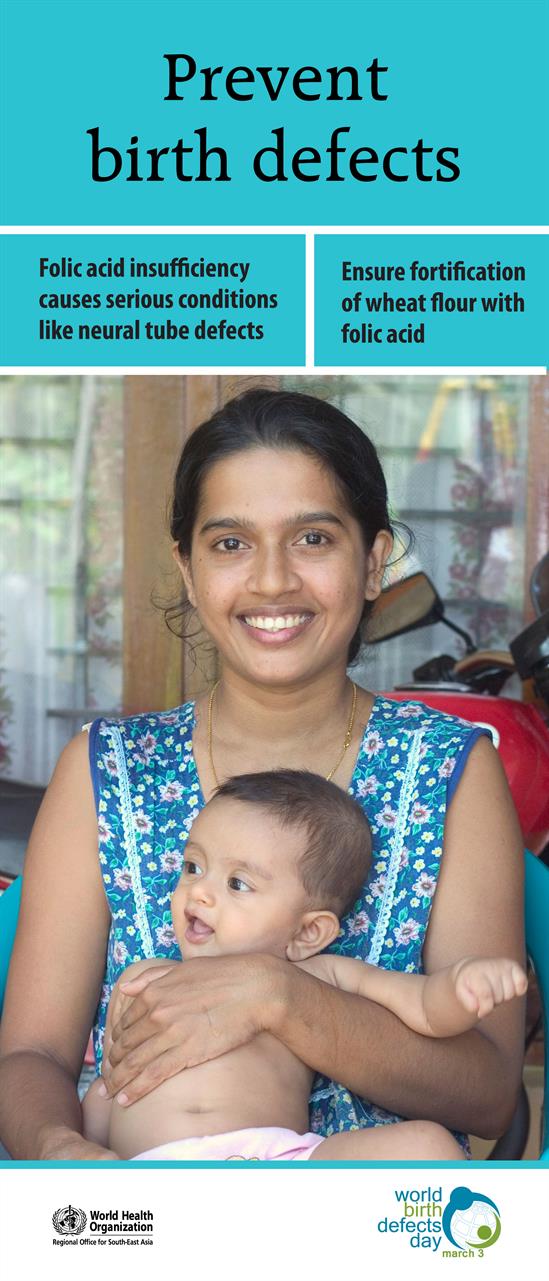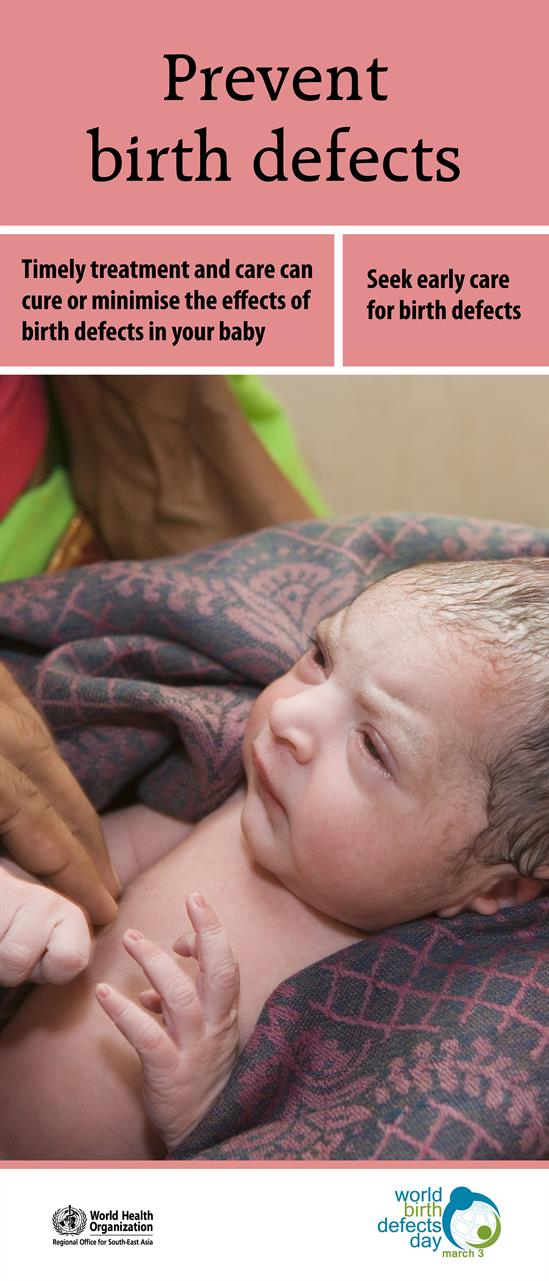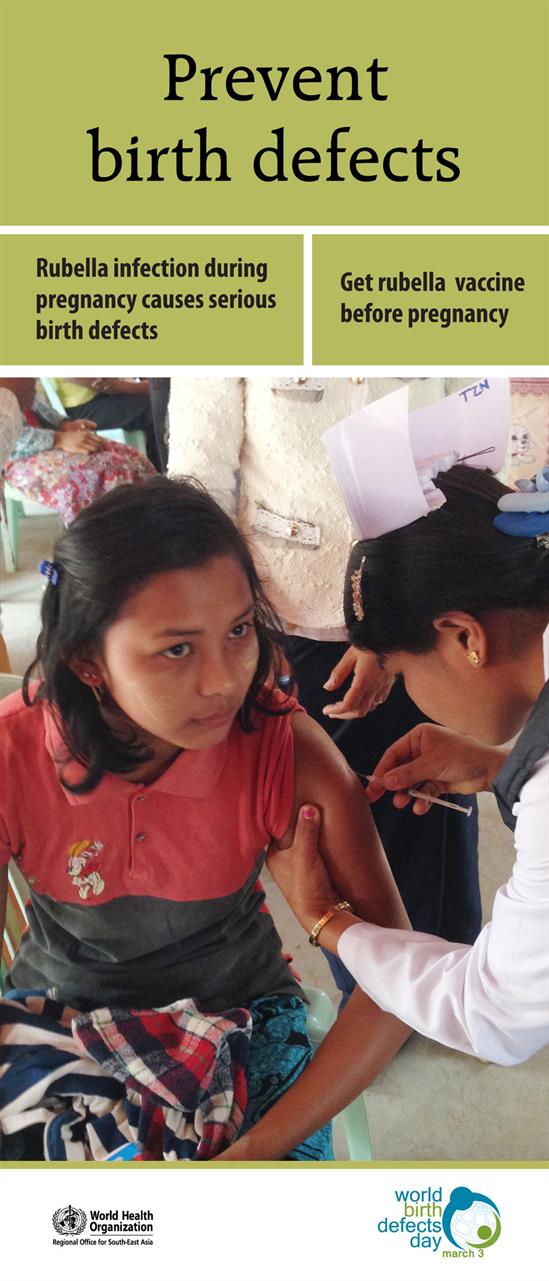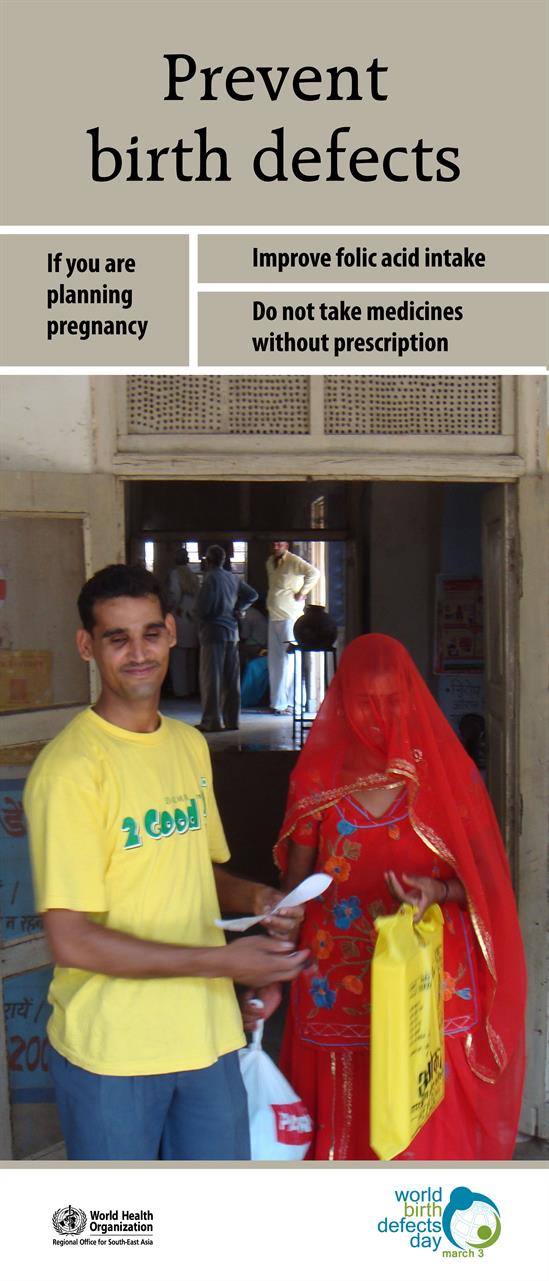Birth defects
Owing to improvement in the management of neonatal infections and birth asphyxia, birth defects are increasingly seen as a significant cause of stillbirths and neonatal deaths. Preventing birth defects-related mortality would contribute to further reductions in child mortality in all countries in the Region.
In 2010 World Health Assembly adopted Resolution WHA 63.17, which identified actions to address birth defects to impact stillbirths and neonatal mortality. In response, the WHO Regional Office for South-East Asia in collaboration with the US Centers for Disease Control and Prevention (US CDC) has implemented regional initiative for prevention and control of birth defects. Regional Strategic Framework of prevention and control of birth defects was launched in 2013 following which countries have prepared national birth defects plans. SEAR-NBBD database has been established for supporting surveillance of birth defects and has supported hospital-based surveillance in the countries. By now more than 3 million births have been reported from more than 150 hospitals in the Region including more than 3000 babies with birth defects.
Countries have been supported to strengthen preventive interventions within the existing national programmes for RMNCAH, nutrition (micronutrient supplementation and food fortification), Immunization (Rubella vaccine for CRS elimination), NCD and environmental health. Countries are also strengthening the programmes for treatment care and rehabilitation of children born with birth defects.South-East Asia Region New-born and Birth Defects (SEAR-NBBD) Surveillance Initiative






